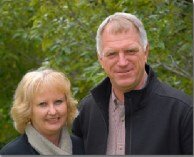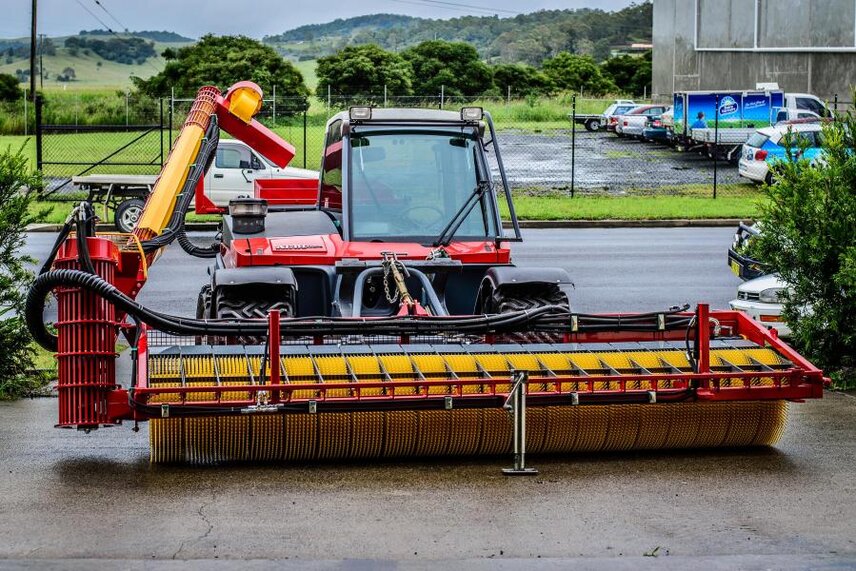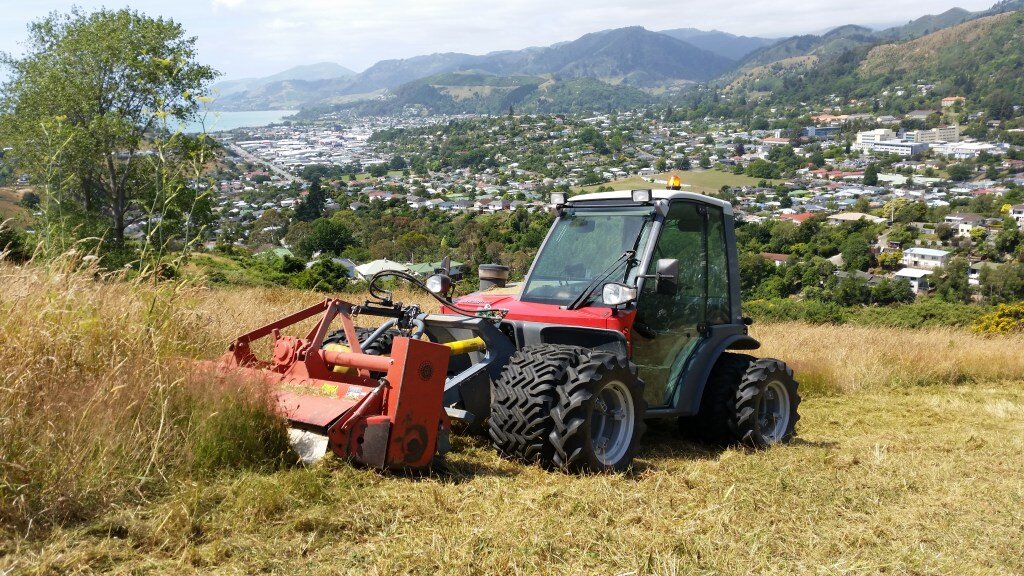Gavin O’Donnell and his wife are experts when it comes to Terratrac, Combicut & Co. With Slope Solutionz Ltd., the couple has been representing Aebi’s products in New Zealand since 2007. Gavin O’Donnell tells us in an interview what makes his daily work so exciting.
While we have almost freezing temperatures below zero in Europe, New Zealanders are enjoying pleasant weather with temperatures around 25 °C. Do the Aebi machines have a specific season in New Zealand and where are they used predominantly?

Gavin O’Donnell: “In New Zealand, the Aebi machines are used primarily for mowing. Aebi is by far not as well known around here as it is in Europe, but a shift in thinking is slowly taking place; operator safety and purpose designed safe equipment are becoming increasingly important. Three-quarters of all fatal accidents in NZ agriculture are caused by agricultural machinery. A worker has just recently been killed in a tractor accident while mowing a slope. The machines are often traditional tractor design and not well suited for the special requirements of steep terrain. Accidents are now subject to heavy penalties and the issue is increasingly addressed in the media. Therefore, more and more farm owners, contractors, and service providers who send their workers and machines to the fields are seeking safer, reliable, alternatives. In this respect, Aebi has great potential. A unique machine in New Zealand. The brand is synonymous with a high level of safety and reliability, even in difficult terrain. We just need to increase the Aebi brand awareness in the market.”
What about winter service in New Zealand, for example?
Gavin O’Donnell: “Winter service work is not that important because the climate in New Zealand is comparatively mild in winter as well. When it does snow, the road maintenance workers just attach a simple snow plough to the front of their trucks, or use a large road grader, and that’s it. Occasionally front end loaders or excavators are used to push accumulated snow over the side of the road. Special snow ploughs or snow cutters are often regarded as too expensive in relation to their rare use. In addition, many regions of New Zealand have unsealed gravel surface roads instead of tarred roads. On these roads, a snow cutter quickly becomes a rock “slingshot”. Unlike what might be the case in Europe, practically all customers in our country need to ensure that the investment costs for an Aebi vehicle are recovered through income during the summer months. This represents a great challenge for many people, which also affects us.”
Are there any other differences to the European market as regards the purchase behaviour of customers or the requirements for the machines?
Gavin O’Donnell: “Yes, there certainly are. Our target groups include not only farmers but also the many green space maintenance contractors typically found in New Zealand. Very few government agencies own their own maintenance equipment. It is more usual that independent contractors carry out the work. Another difference to Europe is that the population density in New Zealand is very low, which is why there is a great deal of space available. This means, in turn, that farmers are not compelled to cultivate or mow steep areas as there are sufficient amounts of pasture fodder in flatter parts of their farm. For this reason, a special transporter that is capable of coping with steep slopes has so far not been necessary either. However, this could change soon, because of increasingly stringent safety regulations. The government of New Zealand only permits a limited number of new registrations for left-hand drive vehicles per year, but we have now received the official confirmation of the Aebi Viatrac being classified as a special-purpose agricultural vehicle and thus being exempted from this limitation. This provides us with an entirely new selling point and I see great potential, especially in the field of fertiliser application.”
To purchase or not to purchase – how do New Zealanders make a purchase decision?
Gavin O’Donnell: “Our experience shows that New Zealanders act rationally rather than emotionally, especially when larger amounts of money are concerned, so they pay attention to factors such as parts availability, expertise, product reliability and operating costs when it comes to replacing existing equipment. All Aebi products are relatively new in New Zealand, which is why the benefits offered by the brand are not yet widely known. It takes time to establish a good reputation for reliability in the New Zealand environment, parts availability, and after sales support. While we can clearly demonstrate our ability to meet these key requirements but the brand is still establishing itself in the market.”
Is the term “Swiss Quality” known in New Zealand and if so, is it a selling point?
Gavin O’Donnell: “Swiss Quality is immediately associated with the high quality and reliability of Swiss watches. At the same time, however, keywords such as “expensive” or “only for the rich” also instantly come to mind when Swiss quality is mentioned. We certainly use the term Swiss Quality in our sales strategy to emphasise the impeccable design attributes and durability of the products, but we make sure to use it in moderation.”
There is almost 20,000 kilometres between you and the factory in Burgdorf. How can this large distance and the cultural and language differences be overcome?
Gavin O’Donnell: “Due to electronic communication systems, the large distance is not a problem anymore. Having Aebi staff able to communicate in English is a great too. The sales, technical, and service support is excellent. When I have a problem today, I usually get a response that evening or the next morning, because of the time difference. This has often impressed my customers. By having a direct point of contact and being able to exchange photos or problem descriptions rapidly, we can offer our customers solutions to problems and demonstrate competent service. The biggest issue with the distance is the cost of freight. We cannot physically reduce the distance so we focus on utilising technology to provide specialist technical assistance, order parts and have them delivered to our customer’s door as quickly and as cost efficiently as we can. Parts ordered today are typically received by the NZ customer within 7 days, sometimes faster with express freight delivery. At some time in the future, I would also like to employ a service specialist who is specifically trained in Aebi’s products.”
Speaking of the future: What are your expectations and goals for 2016?
Gavin O’Donnell: “We continually receive enquiries for Aebi products. While everyone is intrigued by the unique design of the red Ferrari from Burgdorf, unfortunately some have unrealistic expectations about price. We have no complaints about the performance, reliability, or after sales service of the Aebi equipment from those who purchased one and which is a real plus when talking with prospective purchasers.After many, many months of negotiation I remain hopeful to soon sell a Terratrac to Wiroa Station, where 25 exclusive residential buildings are being erected on 500 hectares directly by the sea. With the principal developer talking about his preference for large, open, mowed green spaces within the development, driven by the alternative high cost of amenity landscape planting, and the substantial ongoing maintenance cost associated with the planted areas, the Terratrac offers the perfect solution. Secondly, we will be focussing on developing a market for the Viatrac. In any case, within the constraints of a small volume niche NZ market there is a lot to do – for both us and Aebi.”

